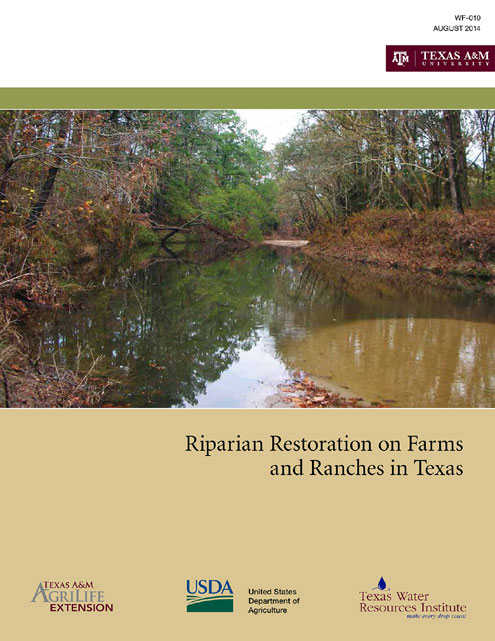COLLEGE STATION – A Texas A&M AgriLife Extension Service official has announced the release of “Riparian Restoration on Farms and Ranches in Texas,” which is now available.
The new publication, which has been given the identification number WF-010, can be downloaded free at http://www.agrilifebookstore.org/product-p/wf-010.htm or purchased at $3 per hard copy through the AgriLife Bookstore at http://www.agrilifebookstore.org/product-p/ewf-010.htm,” said Blake Alldredge AgriLife Extension wildlife associate at College Station.
“Texas has more than 191,000 miles of natural waterways with riparian areas – the green vegetation zones along creeks, rivers and lakes – that collectively provide great economic, social, cultural and environmental value to the state,” Alldredge said.
“This publication was developed for landowners in the Blackland Prairie and Post Oak Savannah ecoregions of Central and East Texas seeking information on how to properly manage their riparian areas. It’s important to note though, that many of the principles and practices discussed are applicable to other parts of the state as well,” he said.

The publication describes ways landowners can evaluate the condition of their riparian areas and then recommends techniques for restoring those sites, he said. Some of the techniques include reseeding native grasses and forbs, proper plant species selection, and proper grazing techniques and management along croplands. The basic monitoring methods used to maintain productivity are also explained.
“Riparian areas are regularly influenced by water and are a vital link between upland grasslands and forests and water bodies,” he said. “Healthy riparian areas capture pollutants and runoff from uplands while alleviating the stresses on the channel itself during floods, which greatly benefits water quality and quantity. Poor management, on the other hand, be it agricultural, industrial or residential, compromises these areas, resulting in poor water quality.”
The publication is a collaborative effort of AgriLife Extension’s wildlife and fisheries unit, the Texas Water Resources Institute and the U.S. Department of Agriculture Natural Resources Conservation Service.
The publication was developed as part of the Building Partnerships for Cooperative Conservation in the Trinity River Basin project managed by the Texas Water Resources Institute and funded by the Texas State Soil and Water Conservation Board through a Clean Water Act grant from the U.S. Environmental Protection Agency.